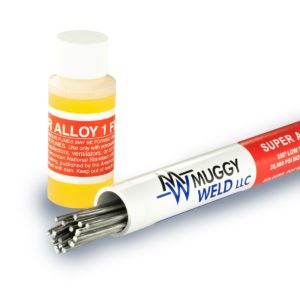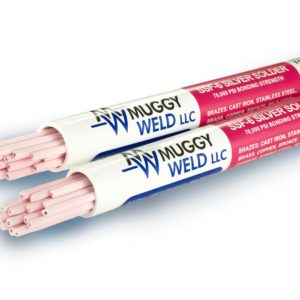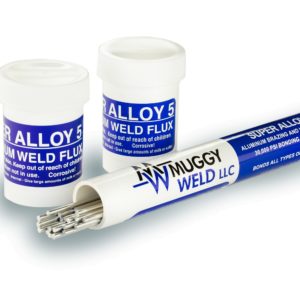Crack-Free Cast Iron Welding with 77 Electrode
Cast iron is a durable alloy comprised of iron and carbon. Whether you’re working with gray cast iron, malleable cast iron, or nodular cast iron, Muggy Weld electrodes can make the repair–simply, quickly, and without pre-heating or special cooling procedures.
Dave, a MuggyWeld customer, owned this cast iron vice with a broken base. After inspecting the part, Mike determined that 77 electrode was perfect for the job and headed over to shoot the video.
As you can see, Dave beveled the crack on both sides prior to welding, to allow the cast iron welding rods to penetrate the parent metal and create a strong bond.
Be sure to weld only 1 inch at a time and let the weld cool for about a minute before adding more electrode. Welding too quickly or too much can overheat the cast iron and destroy the part. Low and slow is the best method when applying Muggy Weld cast iron electrodes. It is best to maintain a close arc when using 77.
After filling the crack with the 77 rod, he tapped the slag to remove it and followed with a wire brush. He finished the repair by grinding the weld into shape.
While the repair shown is a cracked piece of low-quality cast iron, 77 is an effective welding solution for all types of cast iron, and a variety of parts: diesel engines, pump housings, exhaust manifolds, ductile iron pipe, sewer lines, cylinder heads, motor blocks, transmission cases, valve seals, bus pressure plates, carburetors, and retractable wheels.
77 is softer than nickel rods, has superior elongation, and can also be used as a TIG rod.
Heat-affected (burnt) cast iron may require a root pass with 72 electrode, as some heat affected cast iron is difficult to anchor into. Examples are cast iron exhaust manifolds and cast iron woodstoves.
Note: Please observe all AWS Safety & Health Guidelines when using Muggy Weld products.



